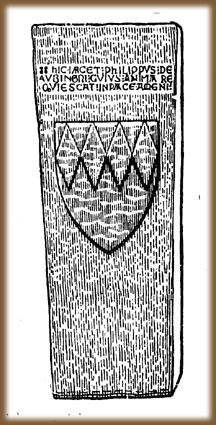Settling of Scores at the Holy Sepulchre
In
1808, a great fire destroyed a large part of the Holy Sepulchre Basilica.
The Greek Orthodox who, according to the Franciscans, had set the fire
deliberately, were allowed by the Turks to rebuild the church. During
the reconstruction, a few Crusader tombs disappeared. We know of the existence
of two of the missing tombs from several descriptions written by travellers
before the fire: the tomb of Godfrey de Bouillon , Jerusalem's conqueror
and of his brother Baldwin I, the first Crusader King of Jerusalem.
The
Franciscans still hold the Greeks responsible for destroying the Crusader
tombs. This longstanding animosity between the denominations is not unusual,
as scores have languished unsettled for centuries between the two Christian
communities. ( During the sack of Constantinople in 1204, for example,
a prostitute was made to sit on the Greek Patriarch's throne.)
It
was only by chance that one Crusader tomb was not destroyed, thanks to
the Muslim guardians of the church. Until 1867, these Turkish guards used
a bench just outside the entrance to sit and smoke their nargileh. The
bench happened to be positioned right over a Crusader tomb, which was
thus spared.
To which lucky Crusader did the tomb belong?
Today it is covered by wooden planks , but we have an old reproduction
of the tomb where it is still clearly visible. From the inscription on
the gravestone we can guess the tomb belongs to an English Knight, Philip
d'Aubigny. He was the preceptor of Henry III, the King of England, and
one of the signatories of the Magna Carta. He came to the Holy Land in
1222 for the first time and escorted Frederick II to Jerusalem in 1229.
He died in 1236 after spending fourteen years in the Holy Land and asked
to be buried near the sepulchre of Jesus Christ.
